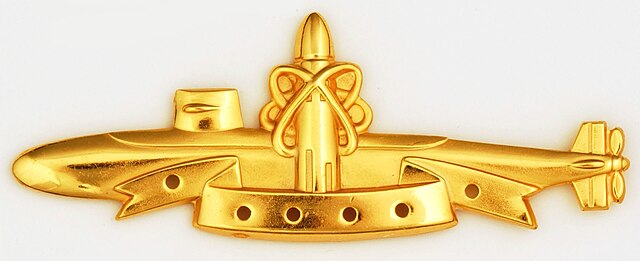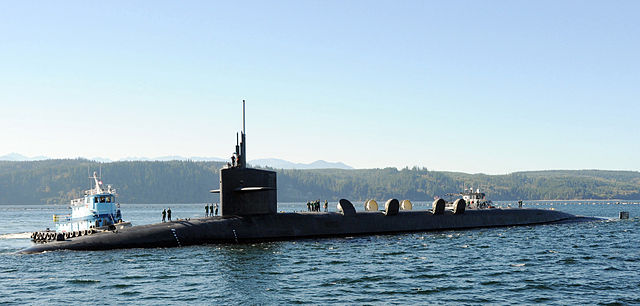The Yankee class, Soviet designations Project 667A Navaga (navaga) and Project 667AU Nalim (burbot) for the basic Yankee-I, were a family of nuclear-powered ballistic missile submarines built in the Soviet Union for the Soviet Navy. In total, 34 units were built: 24 in Severodvinsk for the Northern Fleet and the remaining 10 in Komsomolsk-on-Amur for the Pacific Fleet. Two Northern Fleet units were later transferred to the Pacific.
A Yankee I submarine underway.
K-219 damaged
Yankee Notch
Yankee II
Ballistic missile submarine
A ballistic missile submarine is a submarine capable of deploying submarine-launched ballistic missiles (SLBMs) with nuclear warheads. These submarines became a major weapon system in the Cold War because of their nuclear deterrence capability. They can fire missiles thousands of kilometers from their targets, and acoustic quieting makes them difficult to detect, thus making them a survivable deterrent in the event of a first strike and a key element of the mutual assured destruction policy of nuclear deterrence.
The deployment of ballistic missile submarines is dominated by the United States and Russia. Smaller numbers are in service with France, the United Kingdom, China and India; North Korea is also suspected to have an experimental submarine that is diesel-electric powered.

USS George Washington – the lead boat of US Navy's first class of Fleet Ballistic Missile submarines. George Washington was the first operational nuclear-powered multi-missile strategic deterrence asset fielded by any navy.
SSBN Deterrent Patrol insignia, in silver and gold, awarded by the US Navy to sailors who completed at least one SSBN patrol.
USS Alabama, an Ohio-class (aka Trident) submarine.
A Project 941 (Typhoon-class) nuclear ballistic missile submarine.








